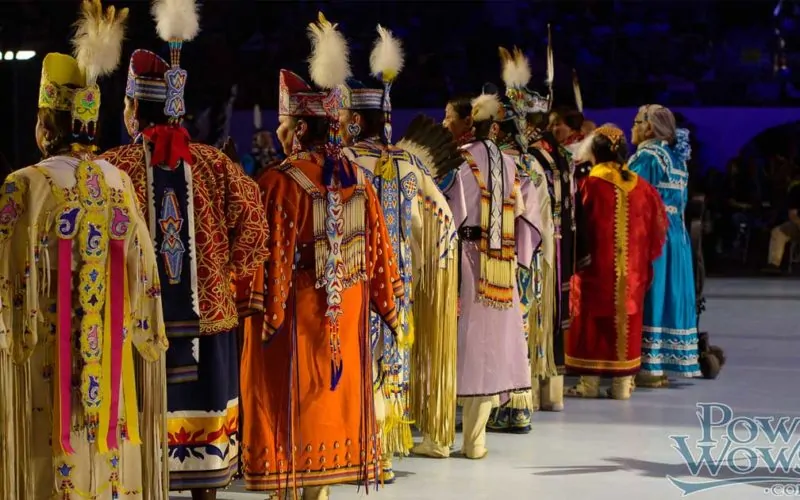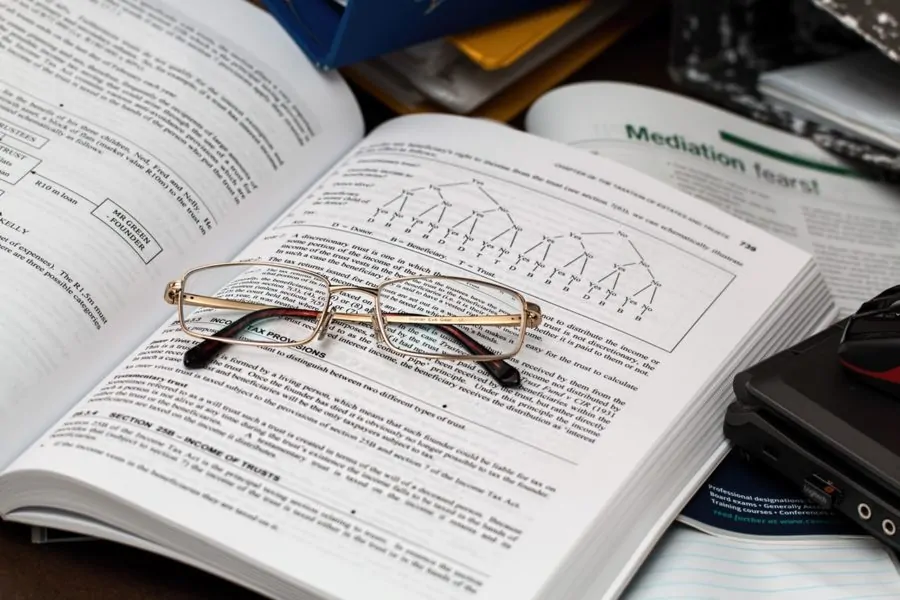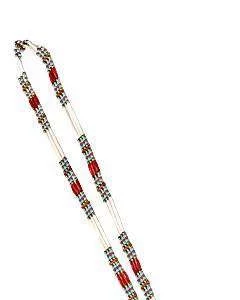Native American individuals and families in the United States often miss out on essential benefits to which they are entitled. This can be attributed to a variety of factors, including mismanagement, inefficiency, and a lack of awareness about available resources. The key government agencies responsible for handling these benefits are the Bureau of Indian Affairs (BIA) and the Federal Social Services Organization (FASS).
While Native Americans can access general welfare-related benefits, food stamps, and healthcare coverage like other citizens, there are specific options tailored to their status as members of one of the 570+ recognized Native American tribes. To access these benefits, individuals must be enrolled as tribal members.
This article aims to provide valuable information about the existing benefits for Native Americans, the eligibility criteria, the application process, and where to seek assistance if needed. It's important to note that this is not an exhaustive list, and receiving these benefits is not guaranteed.
Your Options and How to Receive Them
Too many Native American individuals and families across the United States do not receive the benefits they are entitled to. This stems from gross mismanagement, inefficiency, and simply a lack of understanding about what is truly available for the people. The two main US government agencies[i] that deal with these things include the Bureau of Indian Affairs (BIA) and the Federal Social Services Organization (FASS).
Although Native Americans can, of course, also get general welfare-related benefits, food stamps, and healthcare coverage, there are options specific to their standing as a member of one of the 570+ recognized NA tribes. To receive anything, the individual needs to be enrolled as a tribal member.
This article intends to inform people of what Native American benefits exist, how to apply and qualify for them, and how to get help if you need it.
This is not a comprehensive list or a guarantee that you will get these benefits.
Available Native American Benefits
No matter what type of BIA-related options you have an interest in, you must meet certain criteria to receive them. As mentioned above, enrollment in a tribe that the federal government recognizes is the first and most important. You also must live within an area already approved for services, which can include reservations, tribal lands, and more.
Many benefits are also need-based. To get funds for housing, utilities, food, and other necessary things, you cannot have sufficient money or resources to procure them yourselves. Also, if you already receive public benefits of any kind, you may not be eligible to receive these NA benefits, too. Visit an appointed social worker to go over the details about how to apply for Native American benefits.
Before describing some of the Native American benefits available[ii], it is important to note that funding and compliance with treaty obligations do not always work the way it is intended to.[iii] Poverty among Native peoples is at some of the highest rates all across the country.
The 2019 budget for the BIA's services tops $2.4 billion. This total amount covers every single benefit that they provide, including some handled by the Office of Indian Services that have no immediate or direct impact on how people live in their day-to-day lives.
Some of these budgetary interests include:
- Funds saved for potential disaster relief
- Law enforcement on reservations
- Tribal prisons and other detention centers
- Administrative services for land trusts and natural resource management
- Tribal government payments
- Construction or roads and utility services coming into reservations
Housing Benefits
A large portion of the available funds and assistance for tribal people focus on housing access and improvements. Still, 40% of reservation homes are considered inadequate, and native homeless populations rise all the time.
Various assistant organizations include:
Tribal Housing Board / TDHES – Seeks to improve opportunities for home ownership through the development of low-cost properties, and enforcing non-discrimination laws in general. Money goes toward the Tribally Designated Entity (TDHE), which may exist as a non-profit group or tribe-specific authority. They follow the rules to use the funding appropriately for the benefit of their people.
ONAP – The Office of Native American Programs is associated with HUD and provides a variety of financial benefits to manage communities, guarantee home loans, improve native veterans' access to housing, and help bring existing buildings up to code by getting rid of mold issues and more.
Direct Grants – A variety of grant programs[iv] exists for organizations and tribes who want to use them to improve living conditions, advance communities, and support lower-income Native Americans' desire and need to have reasonable housing. Two of these include the Indian Community Development Block Grant and the Indian Housing Block Grant. No money is given directly to individuals or families, but it must be used to provide increased access to quality housing for them.
Housing Improvement Program (HIP) – Individuals and families can apply to receive HIP benefits for their purposes. Low-income Native Americans get some money directly to improve their living conditions on reservations or other tribal land areas. You must demonstrate a considerable need for renovation, repair, or re-building to qualify.
EPA Green-Building Benefits – In the quest to “go green” and create more environmentally friendly housing all across the United States, the Environmental Protection Agency has created the Indian General Assistance Program (GAP)[v] to give funds for the implementation of eco-friendly building projects. Besides building, this money also helps to educate and train tribe members in sustainable and healthy construction methods.
Indian Home Loan Guarantee – Although many of these things benefit reservations, tribes, and communities as a whole, the federal government of the USA also offers direct help to people who want to own a home.[vi] Applying for these loans occurs through HUD instead of with a bank or mortgage lender, and you are guaranteed acceptance except in very rare circumstances.
Educational Benefits
Although Native Americans are citizens of their tribes or nations, they are also citizens of the United States. This gives all of them the right to a free public education just like any non-native child would attend elementary and secondary school. Despite this legal requirement to provide schooling, tribal education lags behind many districts in non-native regions. Only 13% of tribal students go on to get a university degree as opposed to around 37% of non-tribal students.
There are no benefits handed out that give Native American students free tuition or room and board to Universities. However, 33 colleges have been built and run by the Bureau of Indian Education, and many tribal leaders and families with school-aged children hope for more improvements in the future. The United Tribes Technical College is one of these.[vii]
Some education benefits for Native American families include:
Indian Child and Family Education – The FACE program[viii] attempts to improve how parents get involved in early childhood learning
Various Scholarships – The United States government provides a variety of college and educational training scholarships specifically for people associated with tribes across the country.
Udall Undergraduate Scholarship gives money to Native American students who demonstrate unique services for their people and environmental issues.
American Indian Education Fund[ix] scholarships award money based on need and merit up to approximately $450,000 per year. Besides simply handing out funding for tuition and other university expenses, this group also offers mentorships and ongoing support.
The Association of American Indian Affairs awards many scholarships every year to approximately 10% of the people who apply. Minimum grade point averages are required to retain the funding.[x]
The Daughters of the American Revolution (DAR)[xi] have multiple Native American educational scholarships to hand out annually. Although they are flat amounts instead of ongoing support, everything helps when a student wants to attend college. These are given out based on both financial need and academic achievement.
Other possible advanced education scholarship opportunities include one from the American Indian College Fund[xii], the Intertribal Timber Council[xiii], and the American Indian Graduate Center.[xiv]
Other Educational, Training, and Internship Opportunities
Multiple scholarships and job recruitment programs exist to get more Native Americans involved in the healthcare industry.[xv] These help people interested in finding education in various medical and health-related fields and those already working in Indian health programs.
Individuals who have become disabled and cannot continue with their former job can get vocational rehabilitation. For those living on or near reservations and other designated tribal lands, this service program educates and assists people who can work but need additional training after an injury or illness.[xvi] Non-disabled tribal members can get job placement and training through the Native Employment Works Program in some cases.[xvii]
Other community-based initiatives and organizations exist, which are probably handled by tribal representatives working with US government agencies. Things like the Indian Education Assistance to Schools do various things that do not directly benefit individuals. You can hope that they benefit a school or group of students nearby or that includes your children.
Other Possible Benefits for Individuals and Tribes
The non-tribe-specific assistance programs accessible by all people across the United States are frequently the first line of help for tribal people. These include TANF, or Temporary Assistance for Needy Families, the Food Stamps program, and others associated with specific agencies and conditions. In many cases, a family should apply to these before figuring out how to apply for Native American benefits, as they will supersede any money or help you get from the Indian-specific funds. In other words, if you already receive TANF, it may make you ineligible for additional resources.
In general, Native Americans who are members of federally recognized tribes receive little help directly outside of any ordinary assistance programs available to every citizen. However, the Bureau of Indian Affairs and other organizations do have funding and grant programs available to help communities, reservations, and tribes make improvements that will hopefully benefit the people who live there. In the end, through mismanagement, lack of funding, and community problems, many of the proposed benefits never really come to light.
How to Apply for Native American Benefits
General information about applying for any of the above-listed benefits involves contacting your local Bureau of Indian Affairs office[xviii] for more information. They will help you find a regional office or representative to help you throughout the whole process. In total, 12 offices exist across the United States including Alaska, although there are smaller agencies and individual representatives you should be able to find convenient to most major areas.
Tribe-related benefits such as grants for communities or development funding have their unique application processes depending on the agency or group that controls them. These must come from tribal leaders or legal representation and not random individuals who want, for example, improved housing or a reservation school. Due to the sovereignty of native tribes within the United States, things rely on multiple regulations and practices to make any progress. Expect to wait quite a while for any decisions.
Individuals who need help with housing assistance, upgrading construction, paying for heating or electricity, or other related issues can apply directly. Make sure you and your family are registered with a recognized tribe, have trial identification cards or documents, and have all other necessary information complete before applying anything. This will help minimize processing and wait times. All these things are also required to get approval.
If you have trouble locating or getting in contact with the regional agency or someone else who can help you, get in touch with your tribal leader or simply ask other people about their experiences with the system. It often helps to get friendly help to walk you through the process if you are unsure about anything. The resources linked to in this article can give you quite a bit of information about the various funds and agencies. Most have contact information included. However, talking with tribal members or even finding online communities may provide additional insight to speed up the process or work toward approval more assuredly.
With graduation numbers low, homelessness high, lack of sufficient healthcare rampant, and other problems plaguing the Native American populations more than non-native people across the United States, receiving help from any agency or fun may take considerable time or effort. One of the best things you could do to help your community and yourself is to get involved with tribal affairs, volunteer time and energy to research and make appointments with representatives and agents, and work together for a brighter future.
[i] https://www.benefits.gov/benefit/801
[ii] https://www.usa.gov/tribes
[iii] http://www.nativepartnership.org/site/PageServer?pagename=pwna_media_fundingfacts
[iv] https://www.hud.gov/program_offices/public_indian_housing/ih/grants
[v] https://www.epa.gov/green-building-tools-tribes/funding-opportunities-tribal-green-building
[vi] https://www.benefits.gov/benefit/2706
[vii] https://www.benefits.gov/benefit/802
[viii] https://www.benefits.gov/benefit/794
[ix] http://www.nativepartnership.org/site/PageServer?pagename=aief_services_scholarships
[x] https://www.indian-affairs.org/scholarships.html
[xi] https://www.dar.org/national-society/scholarships/american-indian
[xii] https://collegefund.org/student-resources/scholarships/scholarship-programs/
[xiii] https://www.itcnet.org/about_us/scholarships.html
[xiv] https://www.aigcs.org/scholarships-fellowships/undergraduate-students/
[xv] https://www.benefits.gov/benefit/777
[xvi] https://www.benefits.gov/benefit/915
[xvii] https://www.benefits.gov/benefit/826
[xviii] https://www.bia.gov/regional-offices?utm_source=benefitsgov&utm_medium=801page&utm_campaign=BIAFASA&utm_term=benefitsgov801&utm_content=BIAFASA1
Last Updated on January 5, 2024 by Paul G







M. S. Pihura
says:Good afternoon
My name is Meli Shiu Pihura and I live in Highland Park NJ.
Although I myself am a new immigrant to US, the narrative of American Native Tribes was always fascinating to me, being a history buff and member of Sustainable Highland Park community.
Recently I’ve come across information that one of the major avenues in our town had been actually in the past centuries part of the Greater Leni Lenape Eastern Trail.
How can I get in touch with anybody familiar with this topic? It may be a good initiative for indigenous community of NJ, our sustainability initiatives and environmental programs against climate change to have Raritan Ave renamed back to the original trail’s
name before next Indigenous Peoples Day / Columbus Day.
Looking forward to your advice
Rhonda Ann (Williams is one of my family names)
says:I would like to find my tribe, my people, and learn more about my heritage. I have been on this mission for approximately 9 years now. I found out my native American aunt was murdered by a cop and they covered it up. Please help me to identify with you guys and live on a reservation or some place I can feel at home among my people.
Daphne Carter
says:I am part Native American My mother’s father was 100% Native American His name was Samuel Mcdowell from Cunard West Virginia. I recently learned that I may be intitled to funds can you help me.
Willie Wilson
says:52% Indigenous Native American 48% European
WILLIE Wilson
Mercedes Scholnick2
says:Hi I’m Mercedes and just found out I’m 43% American Indian but not sure what tribe I’m associated with.
Can anyone help me in this situation.
Chaz
says:Who gave you the 43percent number?
bud jihnston
says:where has your family lived?email me
Daniel
says:My grandmother last name was Bishop
Daniel
says:My name is Daniel moberly, my father and his mother are full blooded Cherokee from kentucky. I’m wandering if I have enough blood to apply for tribal aid.
Susan DesJarlait
says:My dad was from Red Lakes, MN. He was born on the reservation there along with his brothers and sisters. I wasn’t born on the reservation. I don’t know how long he lived there. I can’t prove my mother’s blood quantum because all “adoption” records were lost in a fire. I know my dad was 3/4. (We had a french man in the closet about 1700’s) how do I get his #? There’s a 4 digit # next to his name on the tribal census, Is THAT his #? There are questions on the application I just don’t know the answers to because I was too little & both my parents are gone. I want to apply for a card. Any direction would be helpful. Thanks
Teena
says:Hello! My husband is a native American Indian and a member of his tribe, Little River Band Of Ottawa Indians in Michigan. The number next to his name is his tribal ID # . Good luck and God bless !
Update: just realized this post was awhile ago so I’m sure by now you’ve figured things out. Sry for the late response lol
Anita Sue Hamilton
says:I have participated at Quapaw
Rudy Castaneda
says:Hello, I just did a dna test and I’m 3 % native american. Pasqua yaqui. Im trying to buy a house soon and was wondering if there are grants for housing?
Coleen Bartholomew
says:I also just took a test for more info on my back ground because I know I have distant relatives with higher percentages, mine is from pima and mine came back 3.5% which was shocking thought I had more. But was hopeing we also could get help with building a house. Good luck hope it works out for you.
lydia lynn paris
says:I’m registered tribal Indian Cherokee with the trail of tears from Oklahoma I live in Turlock California Stanislaus county and I’m been homeless for about 10 years now cuz about 10 years back I was attacked with a saw-off bat on the left side of my head about 16 to about 30 blows to the left side of my head crushing my head crushing my skull I could see my brain I was scared to go to the emergency I was scared the man would come back to kill me I didn’t want to prosecute the witness to the accident led the police to the weapon and luckily he got prosecuted so there is legal paperwork and proof but social security does not want to help me at all because there’s no medical none sad but is there any way that I can get any type of help in type of help at all I have so many incognitive problems I mean so many problems it’s not even funny I isolate myself I don’t like light I can’t stand people I can’t stand crowds I don’t like noises I don’t I can’t watch TV my emotions are haywire I just can’t function the way I used to I need help can I get help please thank you
Terry G.
says:I was born in Alaska and is part Cherokee Indian from both of my parents. Is there anyway I can get any type of stipend from Alaska?
DIANA D HEINSBERGEN
says:38% NATIVE AMERICAN, HOW DO I APPLY FOR REPERTIONS?? THEY JUST ANNOUNCED TO GIVE BLACKS $25,000. FOR A HOME ETC,,,RIDICULOUS…WE HAVE BEEN SURPRESED & POOR…NEED TO GIVE NATIVES FIRST..AS USUAL NATIVES SIT BACK’ & LET THEM TAKE IT ALLLLL….GOD HELP THE NATIVES….
De
says:This never happened for African Americans. Being African American with Native American blood, I think both sides got the bad end of the stick! It’s not one ethnicity against another… people just need to be treated fairly and equally with the same opportunities. Your comment sounds bitter and racist, although, I am sure you are neither, correct?
Lori Watson
says:I took a DNA test and found out I am 6.5% native American. (I do not live on a tribe, I live in TX.) Also found out I have more Neandertal variants than 17%. Can someone help me understand if I qualify for any money? I was adopted so I never knew my biological parents and so I took this test to find out who I am as my adoption is sealed shut and they can not find records of my birth mom. I was desperate for answers so I took this test. Any help would be greatly appreciated.
Thank You
Lori Watson
says:my number is 512 844 2516
Claudine Saldivar
says:My great grandmother passed away and she had an Indian reservation number. Once she passed away my great aunt kept her number and my grand mother is trying to get but none of our family members are successful. How would my family be able to enroll without the Indian reservation number? My grand mother is in her 70’s and she wants to help all of her grand kids (mysel and others) to be in touch with their ancestors and the benefits, how would she/us be able to do this? Can someone help please?
Glenda S Chesler-Stemple
says:Do you know which tribe your grandmother belongs to?
Rita Rosario
says:If your ancestors was Native American how do you go about getting special assistance as I can recall the tribe was shawnee and two more ask me to pay for they told me I’m absolutely eligible for a lot of things I appreciate if you could give me some more information to leave meat in the right direction
Kyle Eager
says:Hi my name is kyle eager. I am native American my family receive money from the tribe all of my cusins get. Money to help them in these crazy times why do I not get and what should I do to get it see I was put to live with my uncle when I was young and wasnt aware of my heritage now I’m much older I have reunited with my family to find out my haritage is native American is awesome but not id like to find out what I am to to to receive my binifits
Glenda S Chesler-Stemple
says:Which tribe are you a member of? Have you applied for your CDIB card?
Maria Alcantar
says:Where can i and my son go to receive or apply for a CDIB card. What website.Would appreciate the info.Thank you.
Jayme L Roper
says:Hi my name is Jaime my brother is Robert and he is in a federal prison in New York he is supposed to be in Connecticut but got stuck there in the middle of covid-19. In the middle of being transferred this prison has now currently stop accepting inmate due to the lack of healthcare that is not being provided for the inmates I feel like my brother has been sent to a death I am needing to see if there is any kind of way to get him help to get him out of there please or at least someone find out if there’s anything that could be done for the way the inmates are being treated we are Native American we are Choctaw land Cherokee from Oklahoma and he is currently in the Brooklyn Federal MDC Detention Center
Natiki Stallings
says:My son is three years old. The only reason that his heritage was discovered was because of his Mongolian Birthmark. My husband’s people have descended from Maxton, NC. This location is a few miles from Lumberton, NC., whom are known for being land of the Lumbee Tribe. How can we solidify the benefits of his hertiage?
Holly Thomas
says:how do you contact your local BIA office
Glenda S Chesler-Stemple
says:https://www.bia.gov/
Kim Howell
says:I was adopted as a child and was told by my bio siblings
I’m part of the black foot tribe or heritage how do I find out if I qualify to enroll
Donna
says:I am 32 percent Native American Indian Indigenous from Mexico. Don’t know my father and that is we’re it comes from.
Glenda S Chesler-Stemple
says:Contact your tribe at: https://blackfeetnation.com
Wohakozasapa
says:Enrollment,enrollment,enrollment
The essence of the individual is defined and validated in their history heritage and culture.
Donna
says:I am 32 percent Native American Indian Indigenous from Mexico. Don’t know my father and that is we’re it comes from.
Lydia
says:I have just found out I am 17% Native American, with Genealogy found my Great Grandfather is listed with the Isleta Native American Tribe, in the 1800 ‘s